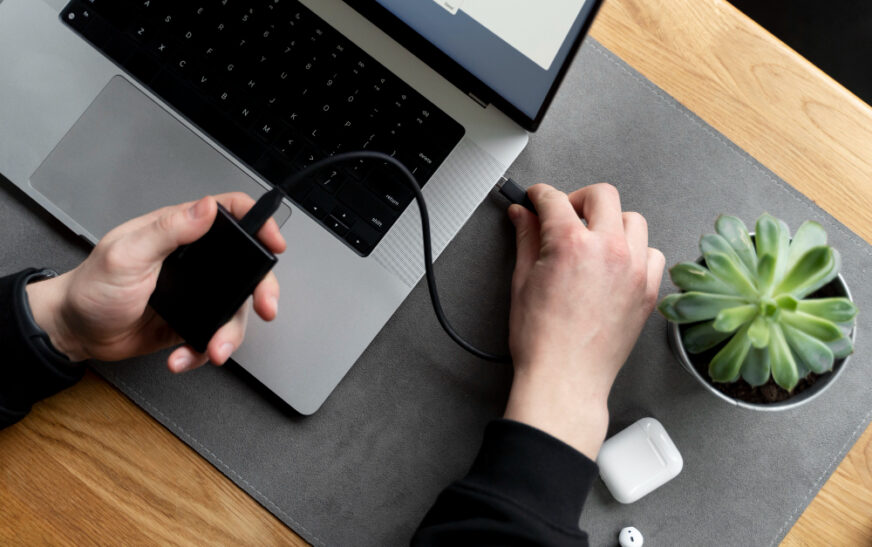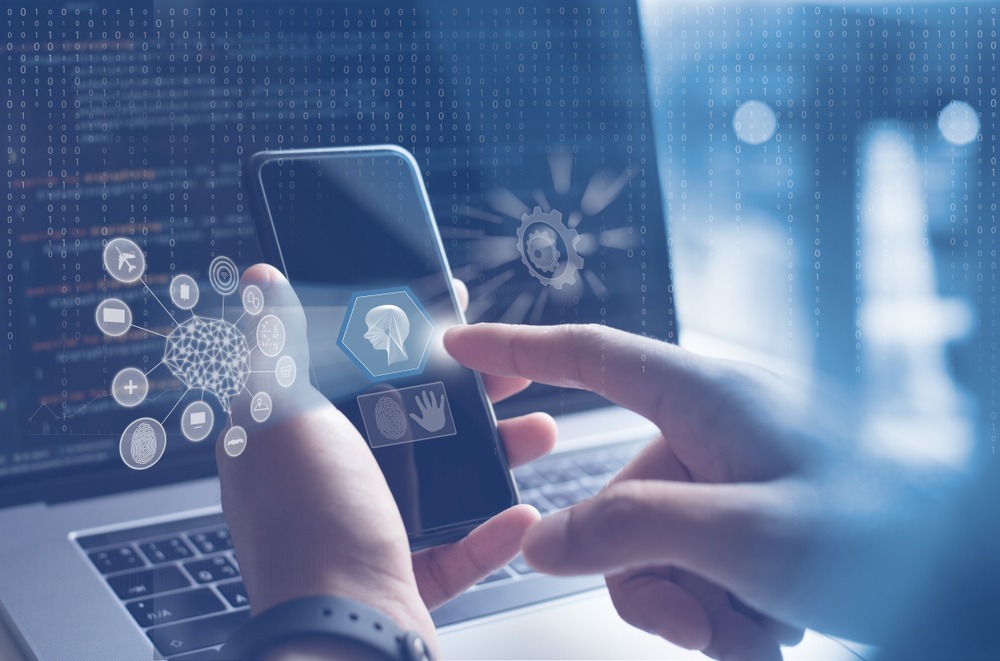Imagine a world where your phone and laptop magically banish dust, fingerprints, and grime without any effort on your part. Sounds like science fiction, right? Not entirely. While fully self-cleaning gadgets are still in the realm of futuristic concepts, advancements in material science and technology are paving the way for a cleaner future for our beloved devices. This comprehensive guide explores the current state of self-cleaning technology for phones and laptops, delving into the potential solutions, challenges, and what the future might hold.
A Filthy Reality: Why Cleaning Our Devices Matters
Our phones and laptops are constant companions, collecting dust, fingerprints, and even harboring bacteria throughout the day. This raises concerns about:
- Hygiene: Germs and bacteria on our devices can potentially transfer to our hands and faces, leading to illness.
- Aesthetics: Visible dirt and smudges can detract from the sleek look of our gadgets.
- Performance: Dust buildup in vents can affect device cooling, leading to overheating and performance issues.
Cleaning Methods We Know: The Limitations of Current Solutions
Currently, cleaning our devices involves manual intervention with:
- Microfiber cloths: The go-to method, but constant wiping can leave streaks and damage delicate surfaces.
- Cleaning solutions: Can be risky if not used properly, potentially damaging the screen or internal components.
- Compressed air: Effective for dust removal, but doesn’t address bacteria or grime.
A Glimpse into the Future: Potential Self-Cleaning Technologies
Researchers and innovators are exploring various approaches to create self-cleaning gadgets:
- Antimicrobial Coatings: These coatings can be embedded on the surface of the device, killing or inhibiting the growth of bacteria. Imagine a phone screen that actively fights germs!
- Benefits: Enhanced hygiene, reduced risk of infections.
- Challenges: Durability of the coating over time, potential allergic reactions to certain materials.
- Self-Healing Materials: Imagine a phone case with a microscopic “skin” that can repair minor scratches automatically. These materials are still under development, but hold immense promise.
- Benefits: Improved scratch resistance, extended lifespan of devices.
- Challenges: Technical complexity, potential high cost of implementation.
- UV Light Disinfection: Ultraviolet light can be used to kill bacteria on surfaces. While not a self-cleaning mechanism in the traditional sense, it offers a potential solution for periodic disinfection.
- Benefits: Effective against a broad spectrum of bacteria.
- Challenges: Exposure to strong UV light can damage certain materials, needs to be implemented safely.
Enhancing Content Credibility:
- Throughout the content, consider linking to reputable sources (research papers, industry reports, technology news articles) to support your claims and enhance content credibility.
User Engagement Strategies:
- Interactive Polls: Incorporate a poll to gauge user preferences: “Would you prefer a phone with an antimicrobial coating or a self-healing case?” This fosters engagement and helps understand user priorities.
- Real-World Examples: Showcase companies or research projects exploring self-cleaning technology for gadgets. This provides a glimpse into ongoing efforts in this field.
Navigating the Roadblocks: Challenges and Considerations
While self-cleaning technology offers exciting possibilities, some challenges need to be addressed:
- Durability and Effectiveness: Self-cleaning mechanisms need to be durable and effective over the lifespan of the device.
- Environmental Impact: The manufacturing process and potential disposal of self-cleaning materials need to be environmentally friendly.
- Cost Considerations: Implementing these technologies needs to be cost-effective to ensure widespread adoption.
Building a Collaborative Future: The Role of Users and Manufacturers
The future of self-cleaning gadgets hinges on collaboration between various stakeholders:
- Manufacturers: Investing in research and development of practical and sustainable self-cleaning solutions is crucial.
- Regulatory Bodies: Ensuring the safety and effectiveness of self-cleaning technologies while minimizing environmental impact is vital.
- Users: Providing feedback and expressing interest in self-cleaning features can encourage manufacturers to prioritize this technology.
Shaping the Future of Device Hygiene
The concept of self-cleaning gadgets holds immense potential for promoting device hygiene, improving aesthetics, and potentially extending their lifespan. Here’s what you can do:
- Stay Informed: Educate yourself about the latest advancements in self-cleaning technology and its potential benefits.
- Demand Innovation: Let manufacturers know you’re interested in self-cleaning features by voicing your preferences through surveys or social media engagement.
- Practice Safe Cleaning Habits: While waiting for self-cleaning gadgets to become a reality, maintain good hygiene practices by regularly cleaning your devices with appropriate methods.
A Look Ahead: The Evolving Landscape of Device Cleanliness
While fully self-cleaning devices are not yet commonplace, the future looks bright. Here’s what to expect:
- Gradual Integration: Expect to see self-cleaning features like antimicrobial coatings or UV disinfection becoming more common in future phone and laptop models.
- Material Science Advancements: Breakthroughs in self-healing materials could revolutionize device care, potentially leading to phones and laptops that repair minor scratches automatically.
- Sustainability Focus: The development of self-cleaning technologies will likely prioritize eco-friendly materials and manufacturing processes.
Self-Cleaning Gadgets
Since our initial exploration of self-cleaning gadgets for phones and laptops, the landscape continues to evolve. Here’s a look at some exciting developments and what the future might hold:
- Antimicrobial Innovations: Researchers are exploring new strategies beyond traditional coatings. Light-activated materials that self-disinfect upon exposure to ambient light are a promising avenue. Imagine a phone case that cleans itself every time you step outside!
- AI-Powered Cleaning: Imagine a phone that detects dirt and grime buildup using built-in sensors and triggers automated cleaning mechanisms like UV light disinfection cycles. AI could even personalize cleaning routines based on your usage patterns.
- Self-Healing Displays: Self-healing polymers are being developed that can automatically repair minor scratches on phone and laptop screens. This technology could significantly improve device longevity and reduce the need for replacements.
Beyond Phones and Laptops:
The concept of self-cleaning isn’t limited to phones and laptops. Here are some other potential applications:
- Smart Homes: Imagine self-cleaning surfaces in kitchens and bathrooms that actively fight bacteria and grime.
- Wearable Tech: Self-cleaning straps for fitness trackers or smartwatches could enhance hygiene and user comfort.
- Public Touchscreens: Public kiosks and ATMs with self-disinfecting surfaces could significantly reduce the spread of germs, especially in high-traffic areas.
Challenges and Considerations:
While these advancements are exciting, some hurdles need to be addressed:
- Energy Consumption: Implementing self-cleaning features needs to be energy-efficient to avoid impacting device battery life.
- Environmental Impact: The materials and processes used in self-cleaning technologies need to be environmentally friendly and sustainable.
- Regulation and Safety: Regulatory bodies need to ensure the safety and effectiveness of self-cleaning mechanisms before widespread adoption.
Conclusion
The quest for self-cleaning gadgets is not just about convenience; it’s about hygiene, aesthetics, and potentially extending the life of our devices. By fostering collaboration between stakeholders and embracing innovation, we can move towards a future where our phones and laptops stay cleaner with minimal effort, allowing us to focus on what truly matters – using them to connect, create, and explore the world around us.




















